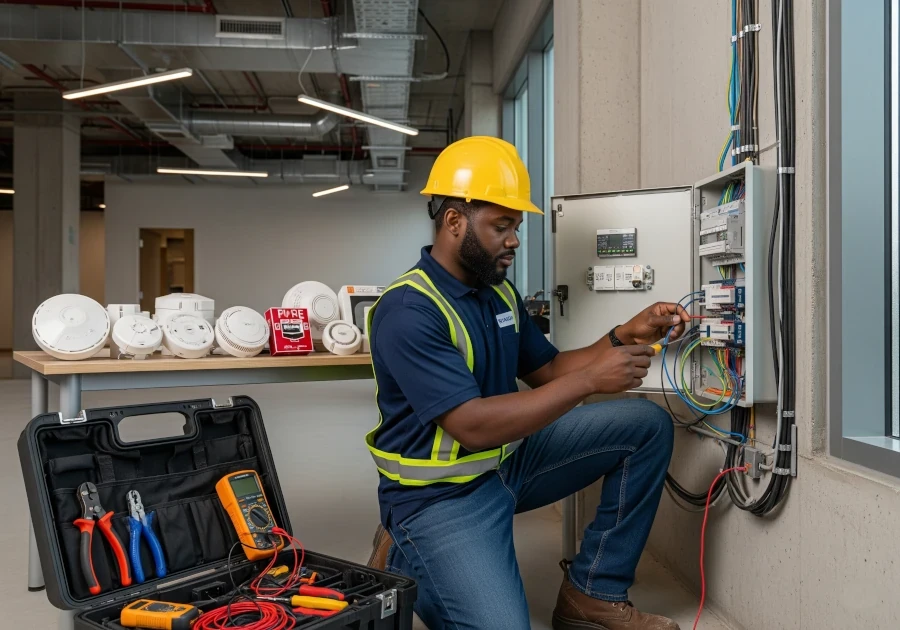
Fire Alarm System Training
Instructor
Ray Gillette
Reviews
Course Overview
Introduction to Fire Alarm Systems
- Objective of Fire Alarm Systems
- Importance of early detection and alert
- Overview of regulatory requirements (NFPA 72, local codes)
Types of Fire Alarm Systems
- Conventional Systems
- Addressable Systems
- Hybrid Systems
- Wireless Systems
- Use cases and differences
Key Components and Their Functions
- Fire alarm control panel (FACP)
- Detectors (smoke, heat, flame, etc.)
- Manual call points (pull stations)
- Notification appliances (horns, strobes, speakers)
- Power supplies and battery backup
System Architecture & Circuit Design
- Initiating device circuits (IDC)
- Notification appliance circuits (NAC)
- Signaling line circuits (SLC)
- Zoning and loop configuration
- Wiring methods and supervision
Detection Technologies
- Ionization vs. photoelectric smoke detectors
- Heat detection (rate-of-rise vs. fixed temperature)
- Flame and gas detection technologies
- Multi-criteria detectors
Installation Standards and Practices
- Code-compliant mounting locations
- Conductor types, gauge, and cable routing
- Environmental considerations
- Labeling and documentation
Programming and Configuration
- Addressable device programming
- Zone mapping and cause-effect logic
- Time delays, verification, and alarm priorities
- Interface with building systems (HVAC, elevators, sprinklers)
Inspection, Testing, and Maintenance
- NFPA 72 inspection/test schedules
- Functional testing procedures
- Preventive maintenance routines
- Recordkeeping and reporting
Troubleshooting and Common Faults
- Ground faults, opens, and shorts
- Device address conflicts
- Communication failures
- Power supply issues
Hands-On Practical Sessions
- Panel wiring and setup
- Device addressing and loop testing
- Simulated fault conditions and diagnostics
- Fire drill coordination and alarm response
Safety Protocols and Best Practices
- Personal and site safety
- Working around live panels
- Emergency procedures and evacuation drills
Final Assessment and Certification
- Written knowledge exam
- Hands-on performance evaluation
- Course completion certification
